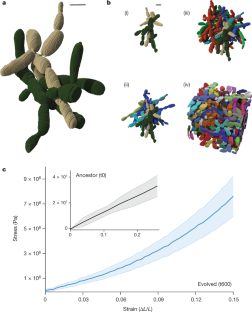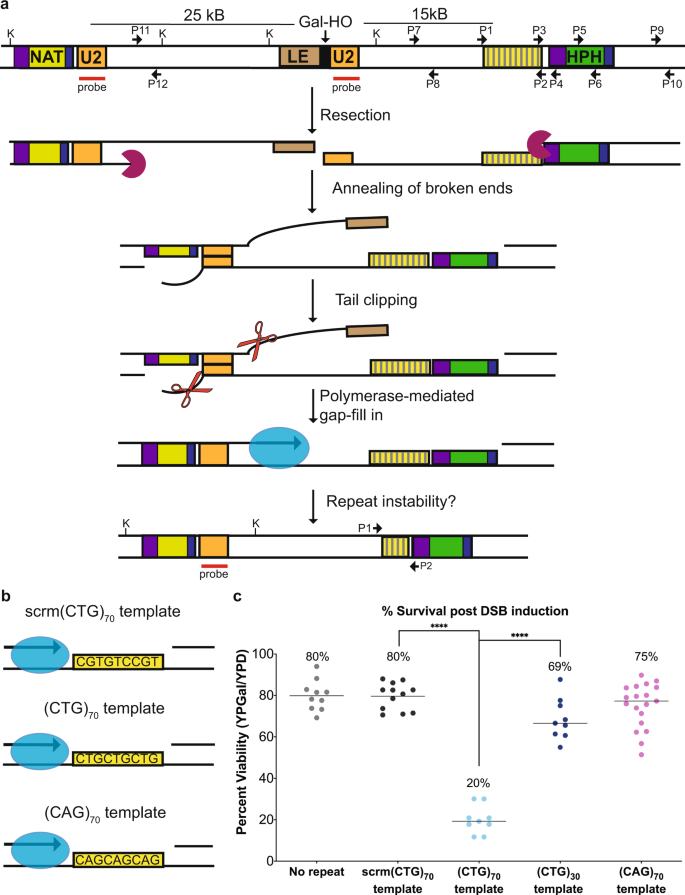2023-05-10 ジョージア工科大学
◆この酵母は、祖先の2万倍以上の大きさになり、肉体的にも強くなった。研究チームは、多細胞生物の系統はすべて最初は小さく単純で、その多くが時間の経過とともに大きく頑丈に進化していったため、生物の大きさを選択した。雪花酵母は、最初はゼラチンよりも弱かったが、進化して木材のように強く丈夫になったという、新しい材料特性を持つようになった。
◆研究チームは、酵母群が非常に大きくなることを可能にする全く新しい物理的メカニズムを発見し、これを「エンタングルメント」と名付けた。
<関連情報>
- https://research.gatech.edu/journey-origins-multicellular-life-long-term-experimental-evolution-lab
- https://www.nature.com/articles/s41586-023-06052-1
巨視的な多細胞化のデノボ進化 De novo evolution of macroscopic multicellularity
G. Ozan Bozdag,Seyed Alireza Zamani-Dahaj,Thomas C. Day,Penelope C. Kahn,Anthony J. Burnetti,Dung T. Lac,Kai Tong,Peter L. Conlin,Aishwarya H. Balwani,Eva L. Dyer,Peter J. Yunker & William C. Ratcliff
Nature Published:10 May 2023
DOI:https://doi.org/10.1038/s41586-023-06052-1

Abstract
While early multicellular lineages necessarily started out as relatively simple groups of cells, little is known about how they became Darwinian entities capable of sustained multicellular evolution1,2,3. Here we investigate this with a multicellularity long-term evolution experiment, selecting for larger group size in the snowflake yeast (Saccharomyces cerevisiae) model system. Given the historical importance of oxygen limitation4, our ongoing experiment consists of three metabolic treatments5—anaerobic, obligately aerobic and mixotrophic yeast. After 600 rounds of selection, snowflake yeast in the anaerobic treatment group evolved to be macroscopic, becoming around 2 × 104 times larger (approximately mm scale) and about 104-fold more biophysically tough, while retaining a clonal multicellular life cycle. This occurred through biophysical adaptation—evolution of increasingly elongate cells that initially reduced the strain of cellular packing and then facilitated branch entanglements that enabled groups of cells to stay together even after many cellular bonds fracture. By contrast, snowflake yeast competing for low oxygen5 remained microscopic, evolving to be only around sixfold larger, underscoring the critical role of oxygen levels in the evolution of multicellular size. Together, this research provides unique insights into an ongoing evolutionary transition in individuality, showing how simple groups of cells overcome fundamental biophysical limitations through gradual, yet sustained, multicellular evolution.


